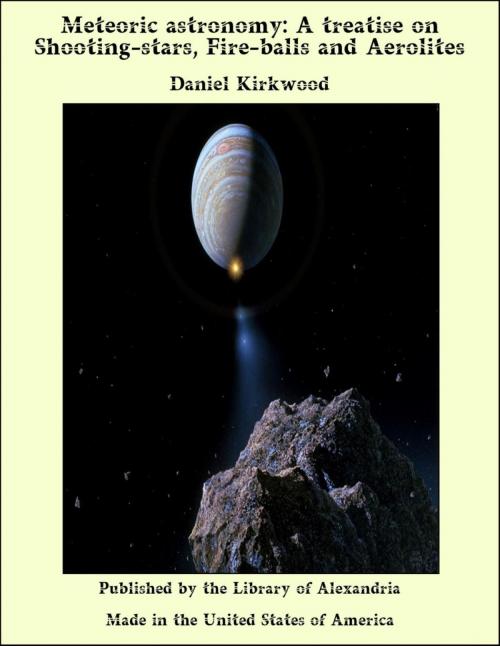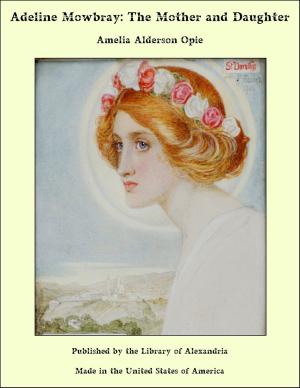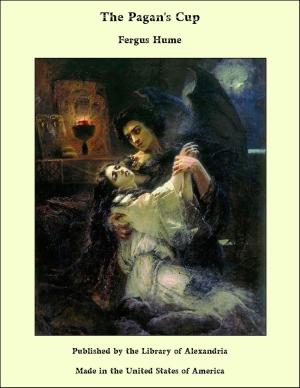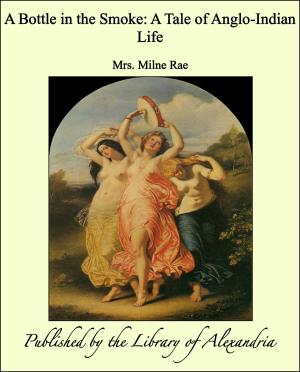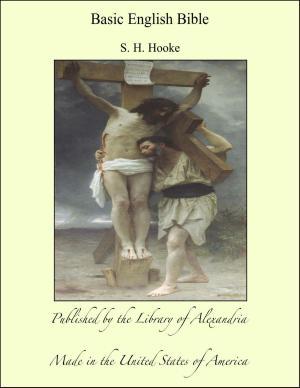Meteoric Astronomy: A Treatise on Shooting-stars, Fire-balls and Aerolites
Nonfiction, Religion & Spirituality, New Age, History, Fiction & Literature| Author: | Daniel Kirkwood | ISBN: | 9781465585462 |
| Publisher: | Library of Alexandria | Publication: | March 8, 2015 |
| Imprint: | Language: | English |
| Author: | Daniel Kirkwood |
| ISBN: | 9781465585462 |
| Publisher: | Library of Alexandria |
| Publication: | March 8, 2015 |
| Imprint: | |
| Language: | English |
Aristotle and other ancient writers regarded comets as meteors generated in the atmosphere. This opinion was generally accepted, even by the learned, until the observations of Tycho, near the close of the sixteenth century, showed those mysterious objects to be more distant than the moon, thus raising them to the dignity of celestial bodies. An achievement somewhat similar, and certainly no less interesting, was reserved for the astronomers of the nineteenth century. This was the great discovery that shooting-stars, fire-balls, and meteoric stones, are, like comets, cosmical bodies moving in conic sections about the sun. Dr. Halley was the first to foretell the return of a comet, and the year 1759 will ever be known in history as that which witnessed the fulfillment of his prophecy. But in the department of meteoric astronomy, a similar honor must now be awarded to the late Dr. Olbers. Soon after the great star-shower of 1833 he inferred from a comparison of recorded facts that the November display attains a maximum at intervals of thirty-three or thirty-four years. He accordingly designated 1866 or 1867 as the time of its probable return; and the night of November 13th of the former year must always be memorable as affording the first verification of his prediction. On that night several thousand meteors were observed in one hour from a single station. This remarkable display, together with the fact that another still more brilliant is looked for in November, 1867, has given meteoric astronomy a more than ordinary degree of interest in the public mind. To gratify, in some measure, the curiosity which has been awakened, by presenting in a popular form the principal results of observation and study in this new field of research, is the main design of the following work.
Aristotle and other ancient writers regarded comets as meteors generated in the atmosphere. This opinion was generally accepted, even by the learned, until the observations of Tycho, near the close of the sixteenth century, showed those mysterious objects to be more distant than the moon, thus raising them to the dignity of celestial bodies. An achievement somewhat similar, and certainly no less interesting, was reserved for the astronomers of the nineteenth century. This was the great discovery that shooting-stars, fire-balls, and meteoric stones, are, like comets, cosmical bodies moving in conic sections about the sun. Dr. Halley was the first to foretell the return of a comet, and the year 1759 will ever be known in history as that which witnessed the fulfillment of his prophecy. But in the department of meteoric astronomy, a similar honor must now be awarded to the late Dr. Olbers. Soon after the great star-shower of 1833 he inferred from a comparison of recorded facts that the November display attains a maximum at intervals of thirty-three or thirty-four years. He accordingly designated 1866 or 1867 as the time of its probable return; and the night of November 13th of the former year must always be memorable as affording the first verification of his prediction. On that night several thousand meteors were observed in one hour from a single station. This remarkable display, together with the fact that another still more brilliant is looked for in November, 1867, has given meteoric astronomy a more than ordinary degree of interest in the public mind. To gratify, in some measure, the curiosity which has been awakened, by presenting in a popular form the principal results of observation and study in this new field of research, is the main design of the following work.
